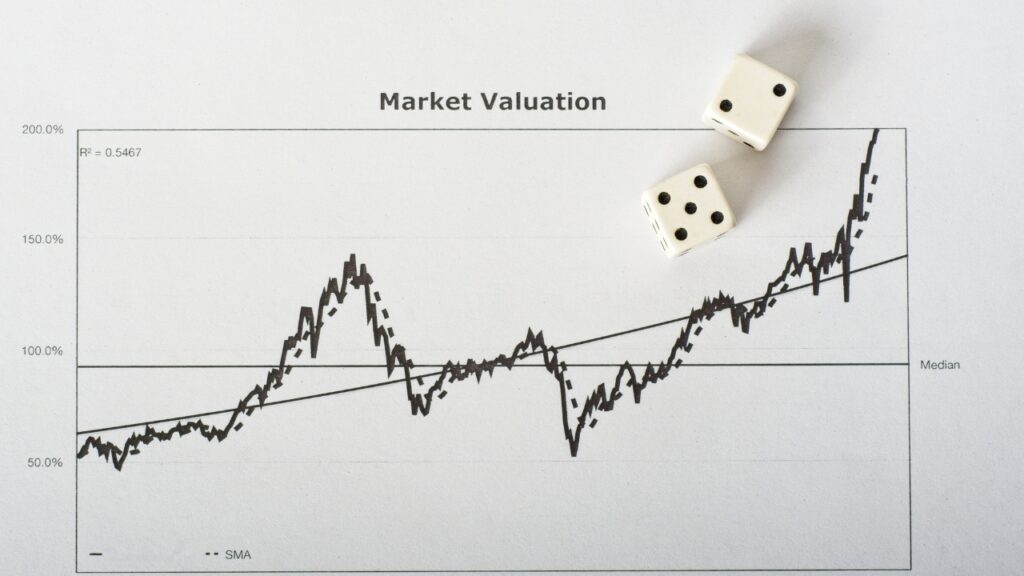Navigating the financial landscape can be daunting, especially when it comes to distinguishing between investing and speculating. While both strategies offer pathways to potentially grow your wealth, understanding the nuances between them is crucial for aligning with your risk tolerance and achieving your financial goals. Investing typically involves a more structured approach, relying on detailed investment analysis and a longer time horizon to build wealth steadily. In contrast, speculating often embraces higher risks with the hope of quick gains, relying on market research and intuition. This article aims to equip you, as a savvy investor, with the knowledge to discern which strategy aligns best with your unique financial objectives and helps you make informed decisions in the complex world of investment strategies.
Understanding Investing
Investing is a fundamental concept in personal finance, offering a path to long-term wealth creation. Let’s explore the key aspects of investing, including strategies, time horizons, and analysis techniques.
Defining Investment Strategies
Investment strategies are structured approaches to allocating funds with the goal of achieving specific financial objectives. These strategies vary based on risk tolerance, time horizon, and financial goals.
Common investment strategies include value investing, growth investing, and income investing. Each approach has its unique characteristics and is suited to different investor profiles.
For example, value investing focuses on identifying undervalued assets, while growth investing targets companies with high growth potential. Income investing, on the other hand, prioritizes regular cash flow through dividends or interest payments.
Choosing the right strategy depends on your personal financial situation, risk tolerance, and long-term objectives. It’s crucial to align your investment approach with your overall financial plan.
The Role of Time Horizon
Time horizon refers to the length of time an investor plans to hold an investment before selling or reaching a financial goal. It’s a critical factor in shaping investment decisions and strategy selection.
Generally, time horizons can be categorized as:
- Short-term: Less than 3 years
- Medium-term: 3-10 years
- Long-term: Over 10 years
Your time horizon influences the types of investments you choose and the level of risk you can tolerate. Longer time horizons typically allow for more aggressive strategies, as there’s more time to recover from market fluctuations.
Understanding your time horizon helps in creating a balanced portfolio that aligns with your financial goals and risk tolerance. It’s essential to regularly review and adjust your investments as your time horizon changes.
Importance of Investment Analysis
Investment analysis is the process of evaluating investments for risk and return characteristics. It’s a crucial step in making informed investment decisions and building a robust portfolio.
There are two main types of investment analysis:
- Fundamental analysis: Examines economic, financial, and other qualitative and quantitative factors
- Technical analysis: Focuses on statistical trends gathered from trading activity, such as price movement and volume
Effective investment analysis helps investors:
- Identify potential opportunities
- Assess risks associated with different investments
- Make data-driven decisions
- Monitor portfolio performance
Regularly conducting investment analysis allows you to stay informed about market trends and adjust your strategy accordingly. It’s a key skill for successful long-term investing.
Exploring Speculating
Speculating is often confused with investing, but it involves a different approach to wealth creation. Let’s examine the characteristics of speculation and how it differs from traditional investing.
Speculation vs. Traditional Investing
Speculation and traditional investing are distinct approaches to financial markets, each with its own set of characteristics and risks.
Speculation involves taking on higher risks in pursuit of potentially larger short-term gains. Speculators often make decisions based on market sentiment, technical analysis, or anticipated events.
Traditional investing, on the other hand, focuses on long-term value creation through careful analysis of fundamentals and a more patient approach to wealth accumulation.
Key differences include:
| Aspect | Speculation | Traditional Investing |
| Time Horizon | Short-term | Long-term |
| Risk Level | Higher | Lower to Moderate |
| Analysis | Often technical | Primarily fundamental |
| Goal | Quick profits | Steady wealth growth |
Understanding these differences is crucial for making informed decisions about your financial strategy.
Analyzing Risk Tolerance in Speculating
Risk tolerance in speculating refers to an individual’s ability and willingness to endure potential losses in pursuit of higher returns. It’s a critical factor in determining whether speculation is suitable for your financial strategy.
Factors influencing risk tolerance include:
- Financial situation
- Investment knowledge and experience
- Age and time horizon
- Personal comfort with volatility
Assessing your risk tolerance involves honest self-reflection and consideration of your financial goals. It’s important to recognize that speculating often involves higher risks than traditional investing.
Before engaging in speculative activities, consider:
- How much you can afford to lose without impacting your financial stability
- Your emotional response to potential losses
- The impact of losses on your long-term financial goals
Remember, a realistic assessment of your risk tolerance is crucial for successful speculation.
Market Research for Speculators
Market research is a crucial component of successful speculation. It involves gathering and analyzing information about market trends, economic indicators, and specific assets to make informed decisions.
Key aspects of market research for speculators include:
- Technical analysis: Studying price charts and trading patterns
- Sentiment analysis: Gauging market mood and investor behavior
- News and event monitoring: Staying updated on relevant market-moving information
Effective market research helps speculators:
- Identify potential opportunities
- Time their entry and exit points
- Manage risks effectively
It’s important to note that while thorough research can improve decision-making, speculation still carries inherent risks. Continuous learning and adaptation are essential for speculators to stay competitive in fast-moving markets.
Key Differences Between Approaches
Understanding the distinctions between investing and speculating is crucial for making informed financial decisions. Let’s explore the key differences in risk tolerance, time horizons, and analysis methods.
Risk Tolerance and Financial Goals
Risk tolerance and financial goals are fundamental factors that distinguish investing from speculating. These elements significantly influence how individuals approach wealth creation and management.
Investing typically aligns with moderate risk tolerance and long-term financial goals. Investors often seek steady growth and are willing to weather short-term market fluctuations.
Speculating, conversely, involves higher risk tolerance and often focuses on short-term financial gains. Speculators are typically more comfortable with volatility and potential losses.
Key considerations:
- Investing prioritizes capital preservation alongside growth
- Speculating accepts higher risk for potentially higher short-term returns
- Your personal risk tolerance should guide your choice between these approaches
Remember, a balanced financial strategy often involves a combination of both investing and speculating, tailored to your unique risk profile and goals.
Short-term vs. Long-term Strategies
The time horizon of financial strategies is a key differentiator between investing and speculating. Understanding these differences can help you align your approach with your financial objectives.
Long-term strategies (typical of investing):
- Focus on steady wealth accumulation over years or decades
- Often involve diversified portfolios to manage risk
- Rely on compound interest and market growth over time
Short-term strategies (common in speculating):
- Aim for quick profits, often within days, weeks, or months
- May involve more concentrated positions in specific assets
- Require active management and frequent decision-making
Choosing between short-term and long-term strategies depends on your financial goals, risk tolerance, and personal circumstances. Many successful investors combine both approaches in their overall financial plan.
Fundamental vs. Technical Analysis
The type of analysis used in decision-making is another key difference between investing and speculating. Understanding these approaches can help you make more informed choices in your financial journey.
Fundamental analysis, often used in investing:
- Examines intrinsic value of assets
- Considers economic, financial, and qualitative factors
- Focuses on long-term potential and company health
Technical analysis, common in speculating:
- Studies price movements and trading patterns
- Uses charts and statistical indicators
- Aims to predict short-term price movements
While investors typically rely more on fundamental analysis, and speculators on technical analysis, many successful market participants use a combination of both. The choice depends on your strategy, time horizon, and personal preferences.
Aligning with Your Financial Goals
Choosing between investing and speculating should be guided by your personal financial objectives. Let’s explore how to evaluate your risk tolerance, set your time horizon, and select the right strategy for your needs.
Evaluating Your Risk Tolerance
Understanding your risk tolerance is crucial for developing an effective financial strategy. It helps determine whether investing, speculating, or a combination of both is appropriate for your situation.
To evaluate your risk tolerance:
- Assess your financial situation (income, expenses, assets, liabilities)
- Consider your investment knowledge and experience
- Reflect on your emotional response to financial volatility
- Think about your long-term financial goals
Remember, risk tolerance can change over time due to personal circumstances or market conditions. It’s important to regularly reassess your comfort level with financial risk.
“The biggest risk of all is not taking one.” – Mellody Hobson, President of Ariel Investments
Setting Your Time Horizon
Your time horizon is the expected period you plan to hold your investments before needing the funds. It’s a critical factor in determining your financial strategy and risk tolerance.
Consider the following when setting your time horizon:
- Short-term goals (1-3 years): Emergency fund, upcoming major purchases
- Medium-term goals (3-10 years): Down payment for a house, starting a business
- Long-term goals (10+ years): Retirement, children’s education
Your time horizon influences:
- The types of investments you choose
- The level of risk you can tolerate
- How you respond to market volatility
Remember to regularly review and adjust your time horizon as your life circumstances and financial goals evolve.
Choosing the Right Strategy for You
Selecting the right financial strategy involves aligning your risk tolerance, time horizon, and financial goals. It’s about finding the balance between investing and speculating that works best for your unique situation.
Consider these factors when choosing your strategy:
- Your financial knowledge and experience
- Available time for managing investments
- Current financial situation and future needs
- Personal interest in financial markets
A balanced approach might include:
- Core investments for long-term stability and growth
- Some speculative positions for potential higher returns
- Regular review and rebalancing of your portfolio
Remember, there’s no one-size-fits-all solution. Your strategy should be tailored to your individual circumstances and goals, and may evolve over time.
Expert Insights and Testimonials
Gaining perspective from experienced investors and financial advisors can provide valuable insights into successful investing and speculating strategies. Let’s explore some real-life success stories and expert advice.
Real-life Investment Success Stories
Real-life success stories can offer inspiration and practical lessons for both investors and speculators. These examples demonstrate how different strategies can lead to financial success.
Case Study: Long-term Value Investing
- Investor: Sarah Thompson
- Strategy: Focused on undervalued blue-chip stocks
- Time Horizon: 20+ years
- Result: 12% average annual return, beating market averages
Key Takeaways:
- Patience and discipline in sticking to a strategy
- Regular portfolio review and rebalancing
- Emphasis on companies with strong fundamentals
Case Study: Successful Speculation in Tech Startups
- Speculator: Michael Chen
- Strategy: Early-stage investments in promising tech startups
- Time Horizon: 3-5 years per investment
- Result: 300% return on two successful exits
Key Insights:
- Thorough research into industry trends and company potential
- Diversification across multiple startups to manage risk
- Willingness to accept losses on some investments
These stories highlight the importance of aligning strategy with personal goals and risk tolerance.
Advice from Trusted Advisors
Insights from financial experts can provide valuable guidance for both novice and experienced investors. Here’s some advice from trusted advisors in the field:
“The key to successful investing is not predicting the future, but having a plan for all possible futures.” – Peter Mallouk, President of Creative Planning
Key recommendations from financial advisors:
- Diversify your portfolio to manage risk
- Stay informed but avoid emotional decision-making
- Regularly review and adjust your strategy
- Consider seeking professional advice for complex financial situations
Remember, while expert advice can be helpful, it’s important to tailor any recommendations to your personal financial situation and goals.
Next Steps in Your Investment Journey
Embarking on your investment journey requires careful planning and ongoing commitment. Here are some actionable steps to help you move forward:
- Assess your current financial situation
- Define clear, measurable financial goals
- Determine your risk tolerance and time horizon
- Educate yourself about different investment options
- Start with a diversified portfolio aligned with your goals
- Regularly review and adjust your strategy
Additional resources:
- Financial education websites and courses
- Investment simulation platforms for practice
- Professional financial advisors for personalized guidance
Remember, successful investing is a journey, not a destination. Stay committed to learning and adapting your strategy as your circumstances and the market evolve.
Conclusion
In the dynamic world of financial markets, understanding the differences between investing and speculating is essential for setting and achieving your financial goals. While investing typically offers steady growth through calculated risks and a long-term approach, speculating allows for potential quick returns, albeit with higher risk. Both strategies have their place in a well-rounded financial plan, depending on your risk tolerance, time horizon, and personal financial objectives. By evaluating these factors, you can make informed decisions that align with your unique goals and pave the way for financial success.
Check this post How to Invest in Gold and Silver
FAQ
Investing generally involves committing money with the expectation of achieving income or profit over a longer term by analyzing fundamental aspects of an investment. Speculating, however, involves short-term strategies aiming for quick gains, often relying on market trends and sentiment rather than intrinsic value.
Risk tolerance is an individual’s ability to withstand potential losses in their investment portfolio. It can be determined by evaluating your financial situation, investment goals, time horizon, and emotional response to market volatility. Self-reflection and potentially consulting with a financial advisor can help in assessing your risk tolerance accurately.
Yes, many successful investors utilize a mix of both investing and speculating to achieve their financial goals. This balanced approach allows for steady long-term growth with a portion allocated to high-risk, high-reward opportunities. It’s important to regularly review and adjust this balance according to your evolving financial situation and objectives.
Investing often relies on fundamental analysis, which involves evaluating a company’s financial health and market position. Speculating usually uses technical analysis, focusing on patterns in price movements and trading volumes to predict future price changes. Some investors use a combination of both analyses to guide their decisions.
Begin by assessing your current financial situation and defining clear financial goals. Determine your risk tolerance and time horizon, educate yourself on different investment strategies, and start with a diversified portfolio aligned with your objectives. Regularly review and adapt your strategy, and consider professional advice for complex situations.




